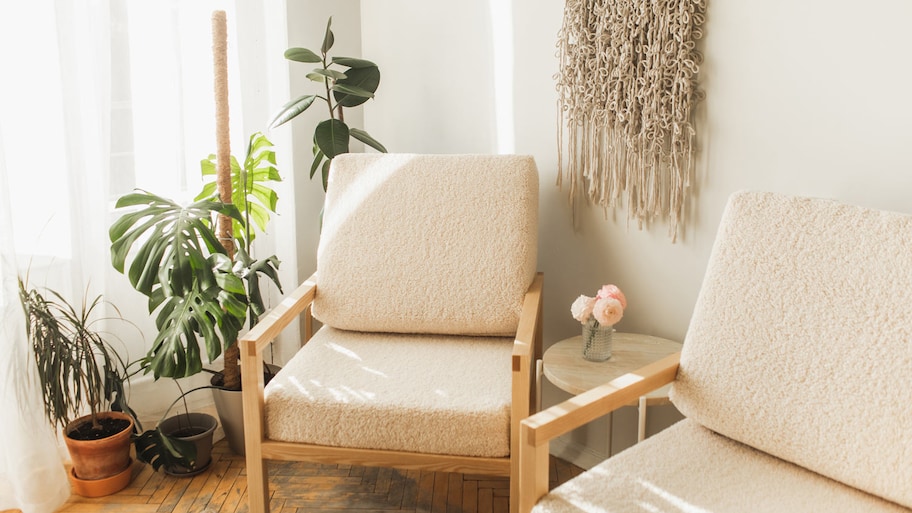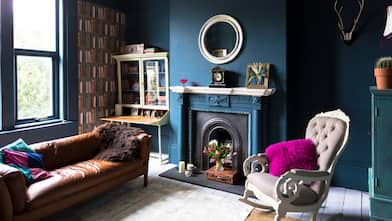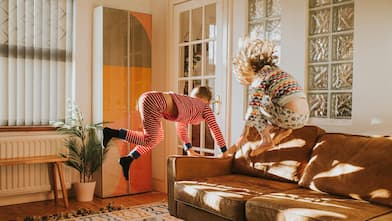Find the perfect fabric
Home is where the heart is. It’s also where life happens, and well-worn furniture is a lovely reminder of the good times. Movie night, game night, sick days, and holidays—your upholstered furniture has probably seen it all. As time marches on, the question of whether to reupholster or buy new furniture has probably come up more than once.
At the end of the day, it all comes down to your budget. And if new furniture is not in the cards, a weekend DIY project to rehab your furniture might be in order. By choosing the best fabric for upholstery, you can freshen up your space and breathe new life into your favorite furniture pieces.
What Is Upholstery Material?
Upholstery material is the textiles or fabrics used to add the finishing touch for furniture pieces. Furniture pieces tend to go through a lot in their lifetime, so upholstery fabrics are heavy and robust enough to withstand that kind of wear and tear. There are natural upholstery fabrics and synthetic upholstery fabrics.
Natural Upholstery Fabric
Natural fabric is a popular choice for upholstery, and they typically score high marks for aesthetics. That being said, there are plenty of natural fabrics to choose from, and each one comes with its own pros and cons.
1. Cotton
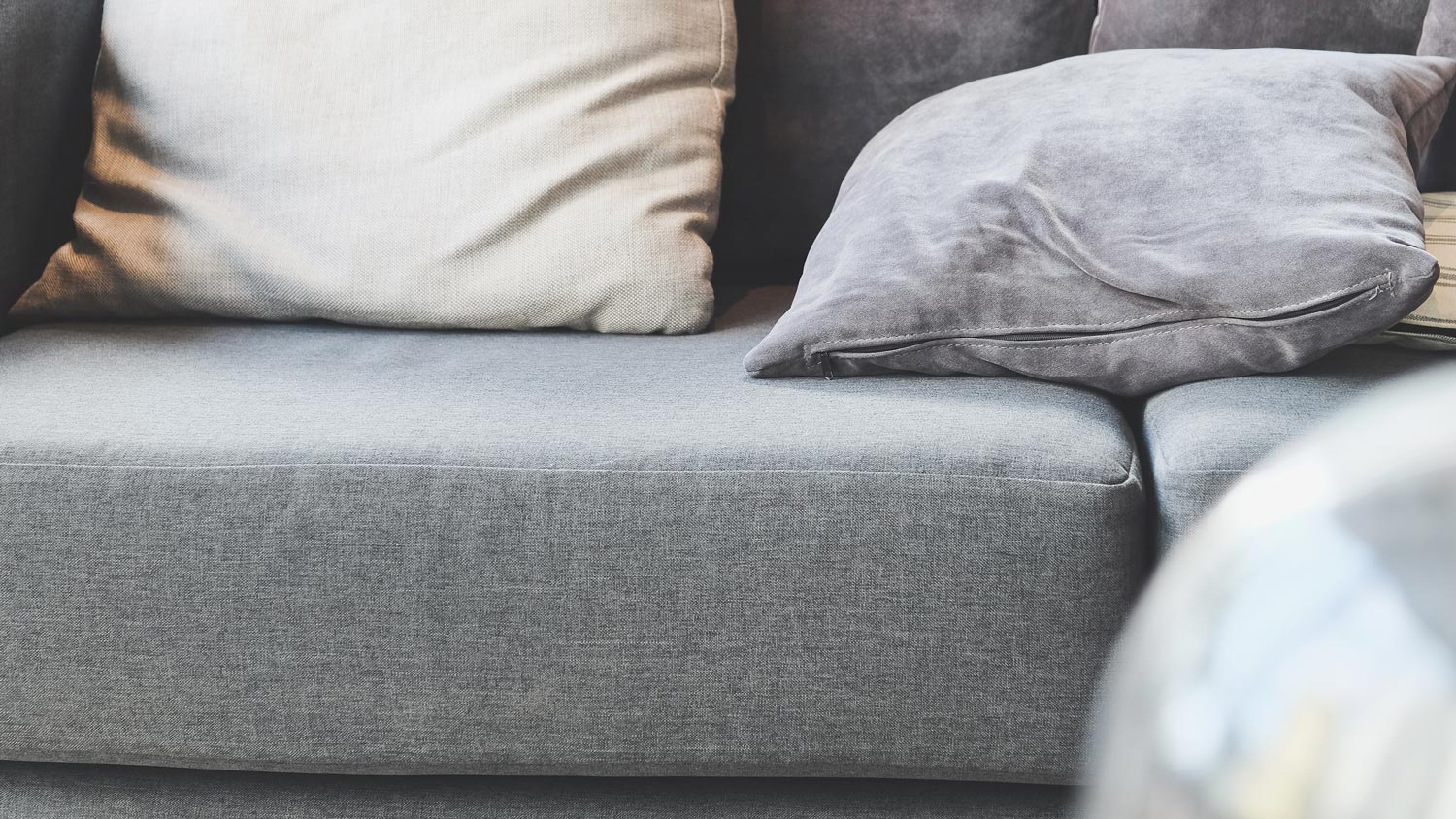
Cotton is the most commonly used type of upholstery fabric and, therefore, the most popular.
As a natural fabric, cotton has a lot going for it. It’s breathable, wears well, and offers exceptional durability and resistance to fading.
Cotton can also be easily dyed, so you’ll have no trouble finding it in any color of the rainbow. However, with all the positives that cotton has to offer, there is one significant drawback to using cotton for upholstery material, and that’s its susceptibility to stains. Due to the fact that it can stain so easily, you may not want to use cotton for furniture that sees a lot of action and certainly not for your dining room chairs.
2. Leather
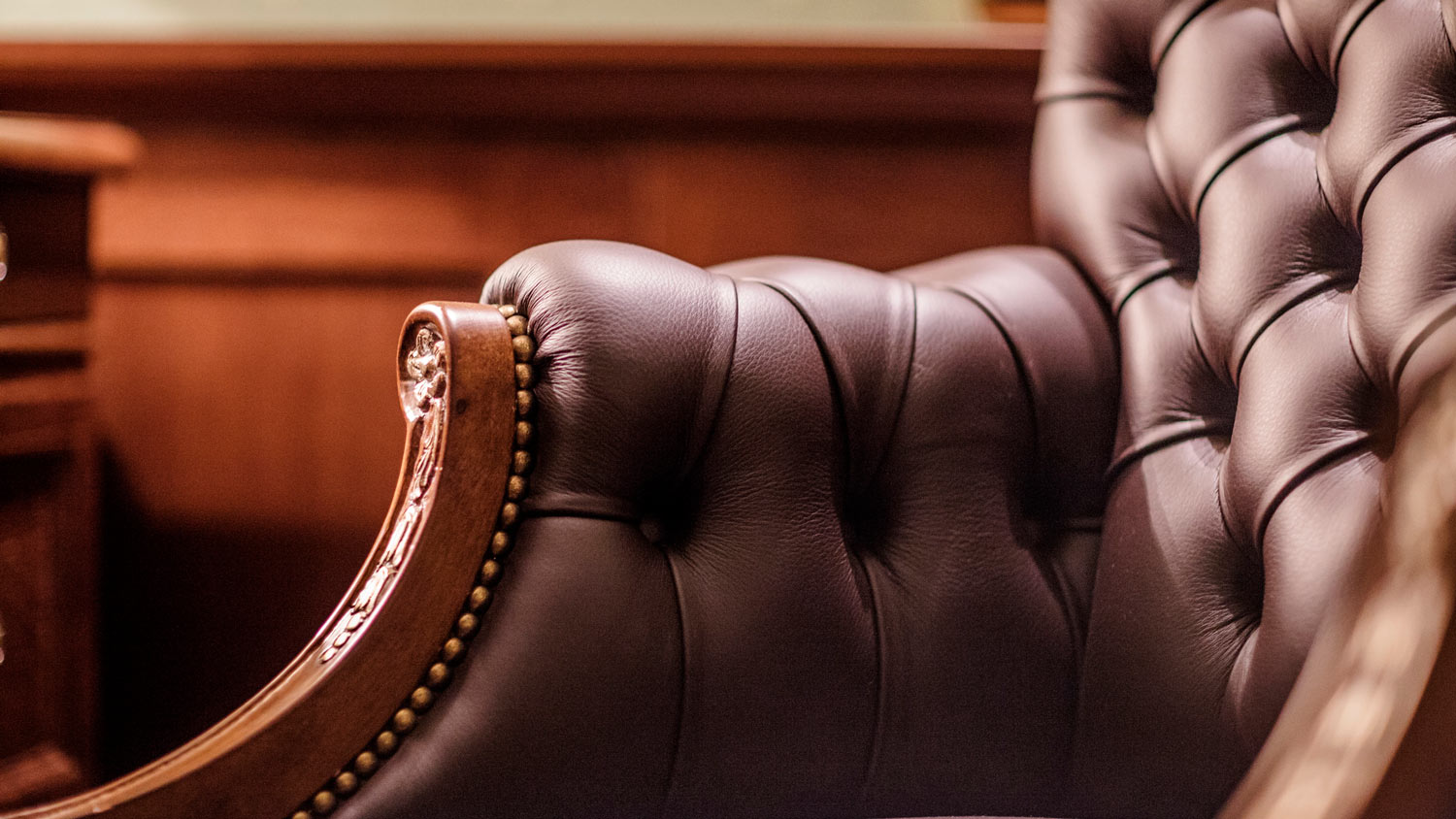
Leather is probably the most durable fabric for upholstery, and as an added bonus, it looks pretty dynamite in any space. Great for high traffic areas, kids, and pets, leather upholstery can take a licking and keep on ticking. Leather is also one of the best types of fabric for furniture upholstery because it’s easy to maintain.
Moreover, leather is known to wear exceptionally well; it’s hard to argue that distressed leather looks pretty fabulous. While leather adds a stylish and swanky feel to any room, it doesn’t offer the soft and squishy feel that other fabrics have. And, of course, the high price points can be off-putting.
3. Linen
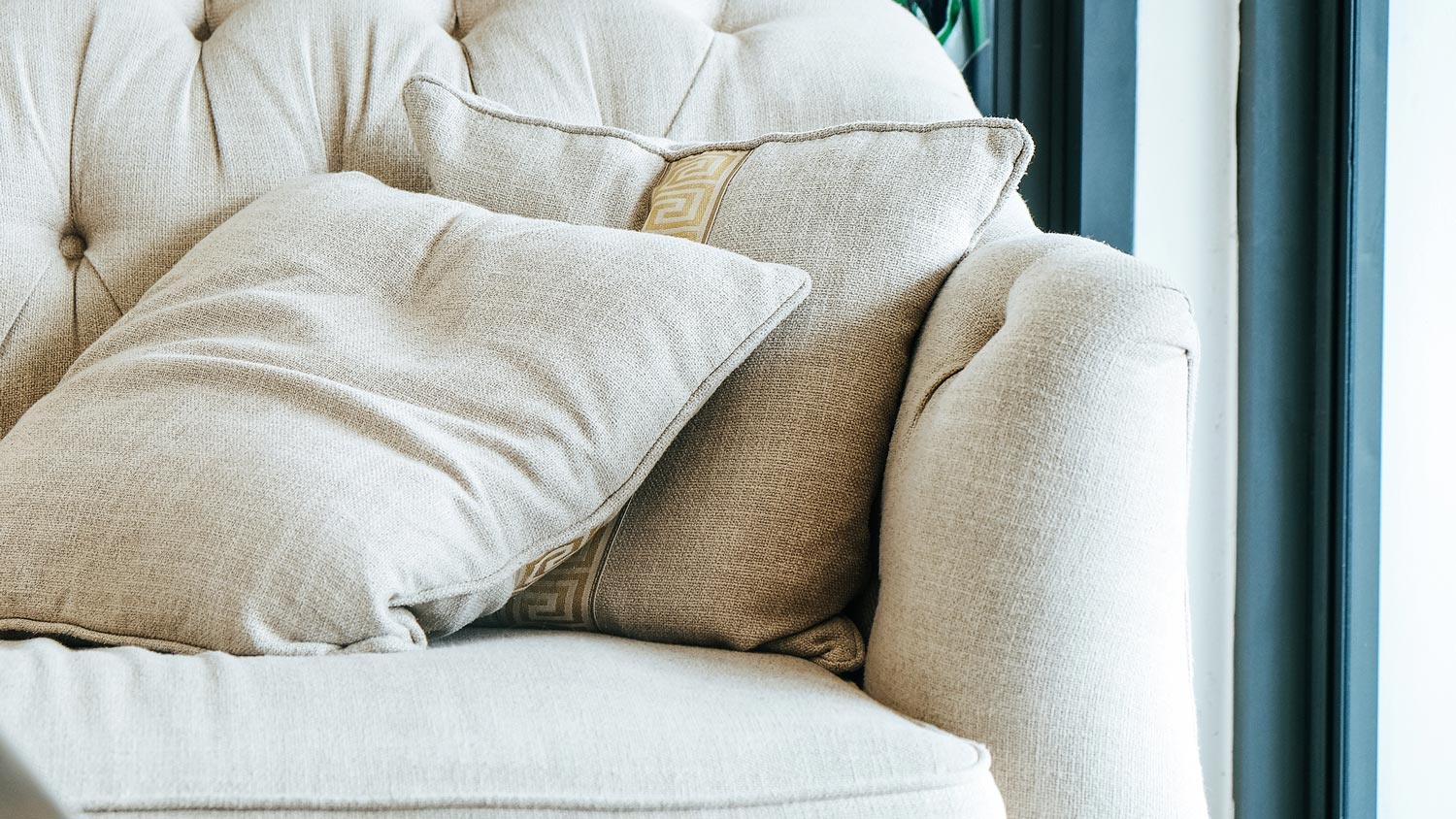
As far as upholstery fabrics go, linen is always an option, but it may not be an option for every home. Anyone familiar with linen will tell you that it’s quite soft and has a good hand (feels good against your skin). Linen can work for some upholstered items because it’s abrasion-resistant and relatively affordable.
However, if you have a busy home with small kids and pets, linen should probably be at the bottom of your list. It wrinkles easily, soils easily, and is not suitable for high traffic and shenanigans.
4. Silk
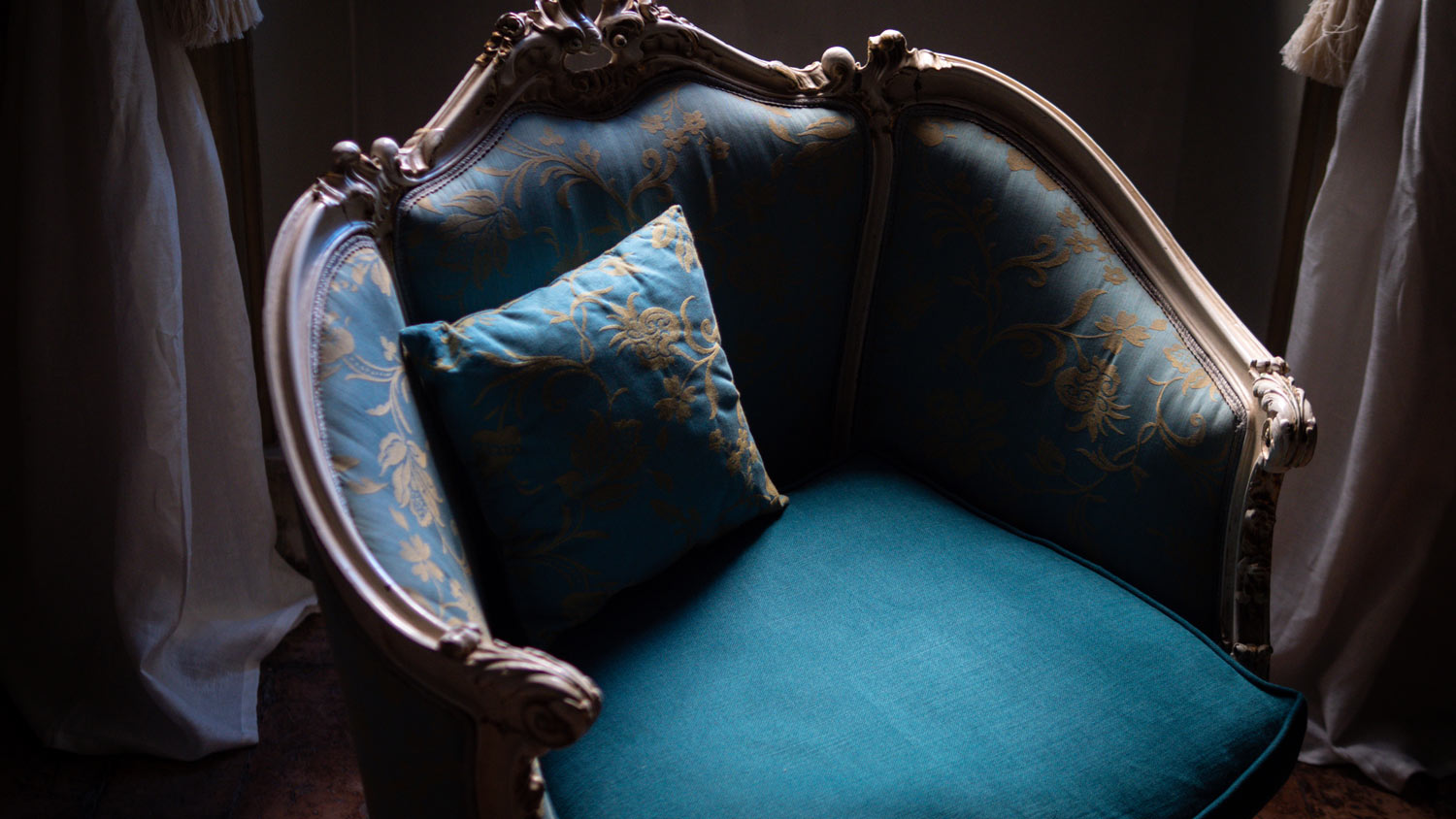
Like linen, silk is one of the more luxurious upholstery fabrics you can find. Notably, silk upholstery fabric is often available in a wide variety of patterns, colors, and elegant designs. Silk upholstery is not family-friendly or pet-friendly, so it’s probably best reserved for formal rooms and furniture with little to no traffic.
Overall, silk is gorgeous but not durable or fade-resistant. But make no mistake, if you choose silk for your upholstery fabric, silk is not cheap, so it’s going to be a big investment. Moreover, silk soils easily, and you will need to have it professionally cleaned when that happens. So, in addition to the initial investment, you will also have to factor in the cost of furniture upholstery cleaning and long-term maintenance.
5. Wool
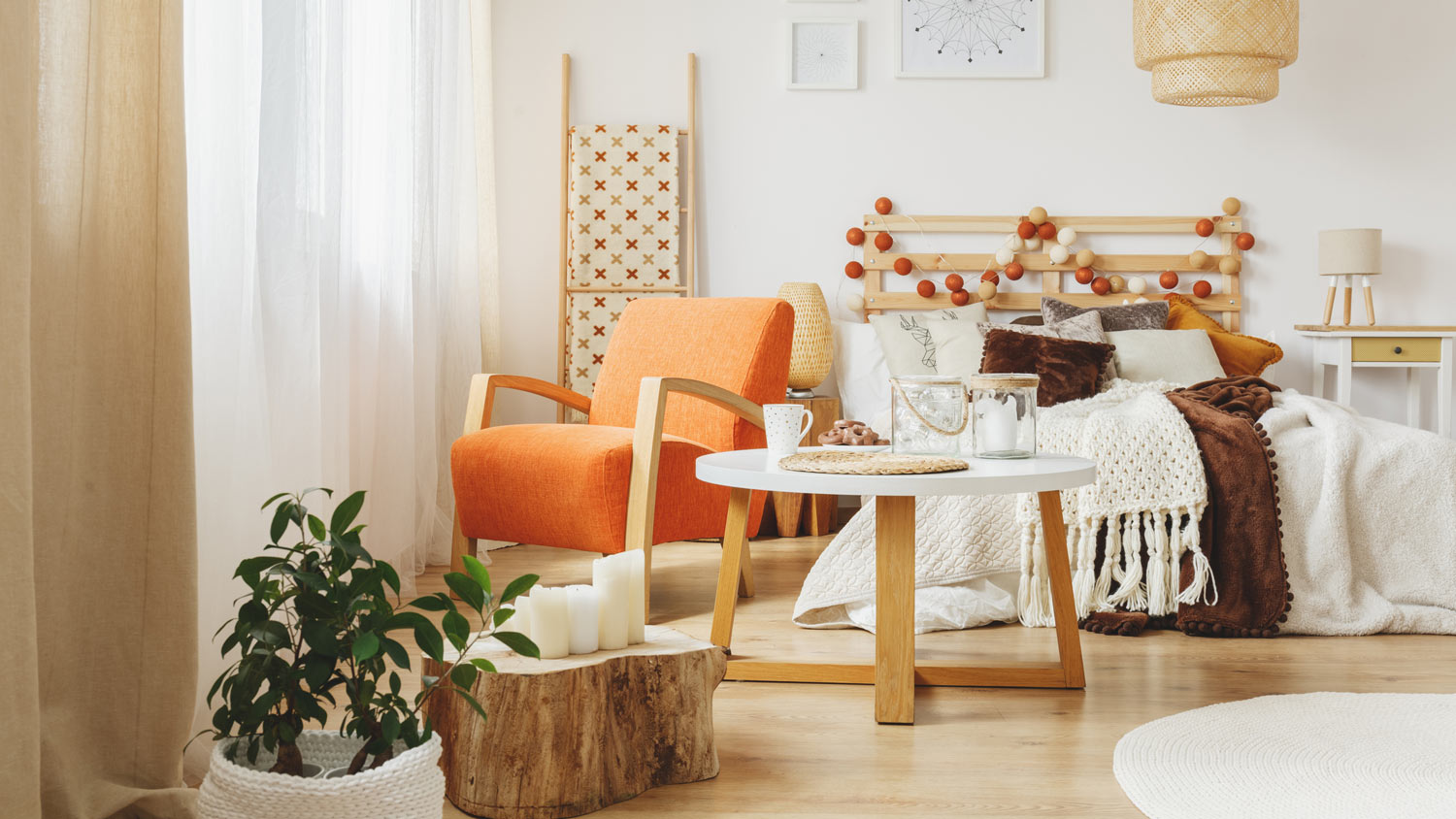
Wool rounds out our list of natural fibers for upholstery. As far as upholstery fabrics go, wool is quite durable. Plus, it's resistant to pilling and staining, which not only makes it a great choice for furniture but also a great choice for high traffic rooms.
Wool doesn't fade or wrinkle, and it's both fire and water-resistant. And finally, wool is also a good insulator, so it's warm when the weather is cold, and it's cool when the weather is hot. The most notable drawback to wool is the high price tag.
Synthetic Upholstery Fabric
Many synthetic upholstery fabrics were created as less expensive and more durable options to their natural counterparts. While there are a host of synthetic upholstery fabrics to choose from, there’s still a lot to consider, especially when it comes to flammability and durability over the long term.
6. Polyester

Polyester is a synthetic fiber that’s commonly used in upholstery fabric. Like cotton, it’s often available in a slew of colors, making it quite versatile. Polyester is a great choice for upholstery fabric because it’s durable, comfortable, stain-resistant, and easy to clean. The greatest drawbacks to using polyester as upholstery fabric are that it tends to stretch over time and is flammable, which could present quite a safety hazard in your home.
7. Olefin (Polypropylene)
One of the lesser-known fabrics for upholstery is olefin. Olefin is a petroleum-based synthetic fiber, so it’s quite durable and great for busy homes, small children, and pets. Aesthetically, olefin looks and feels like wool. This fabric is fade-resistant, fire-resistant, and water-resistant. Plus, it’s easy to clean.
If you choose olefin fabric for an upholstery project, you may want to keep in mind that your color and patterns choices will be limited, and olefin is quite vulnerable to sunlight and oil-based stains.
8. Acrylic
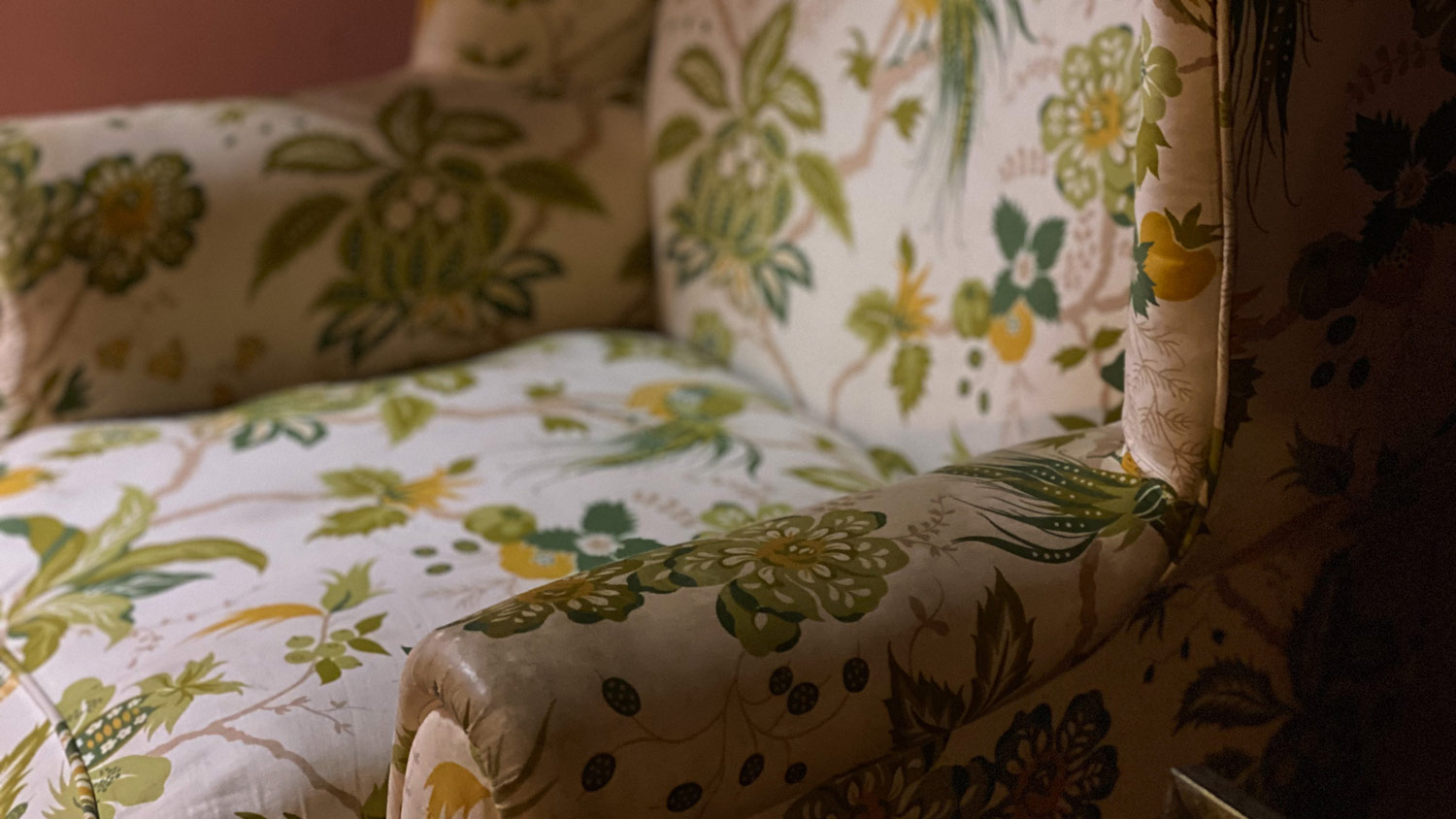
Originally created to imitate wool, acrylic is another synthetic fiber that has found its way as an upholstery fabric. Acrylic is easy to wash and clean; it dries quickly and is sun safe. Altogether these desirable properties make it an excellent go-to for outdoor cushions. If you’re thinking about using it indoors, however, there are some drawbacks you may want to keep in mind.
Acrylic fabric is not abrasion-resistant, and low-quality acrylic tends to pill easily. Perhaps more importantly, acrylic is highly flammable. While it may take some time to ignite, it will burn quickly once it does.
9. Rayon
Rayon makes the list of options for upholstery fabric but with the caveat that it’s not the best choice. While it’s soft, comfortable, and often available in a wide range of colors, rayon won’t look sharp for very long. It wrinkles easily, and it’s generally hard to maintain. This is not the best upholstery fabric for busy homes or your favorite seating areas.
10. Velvet
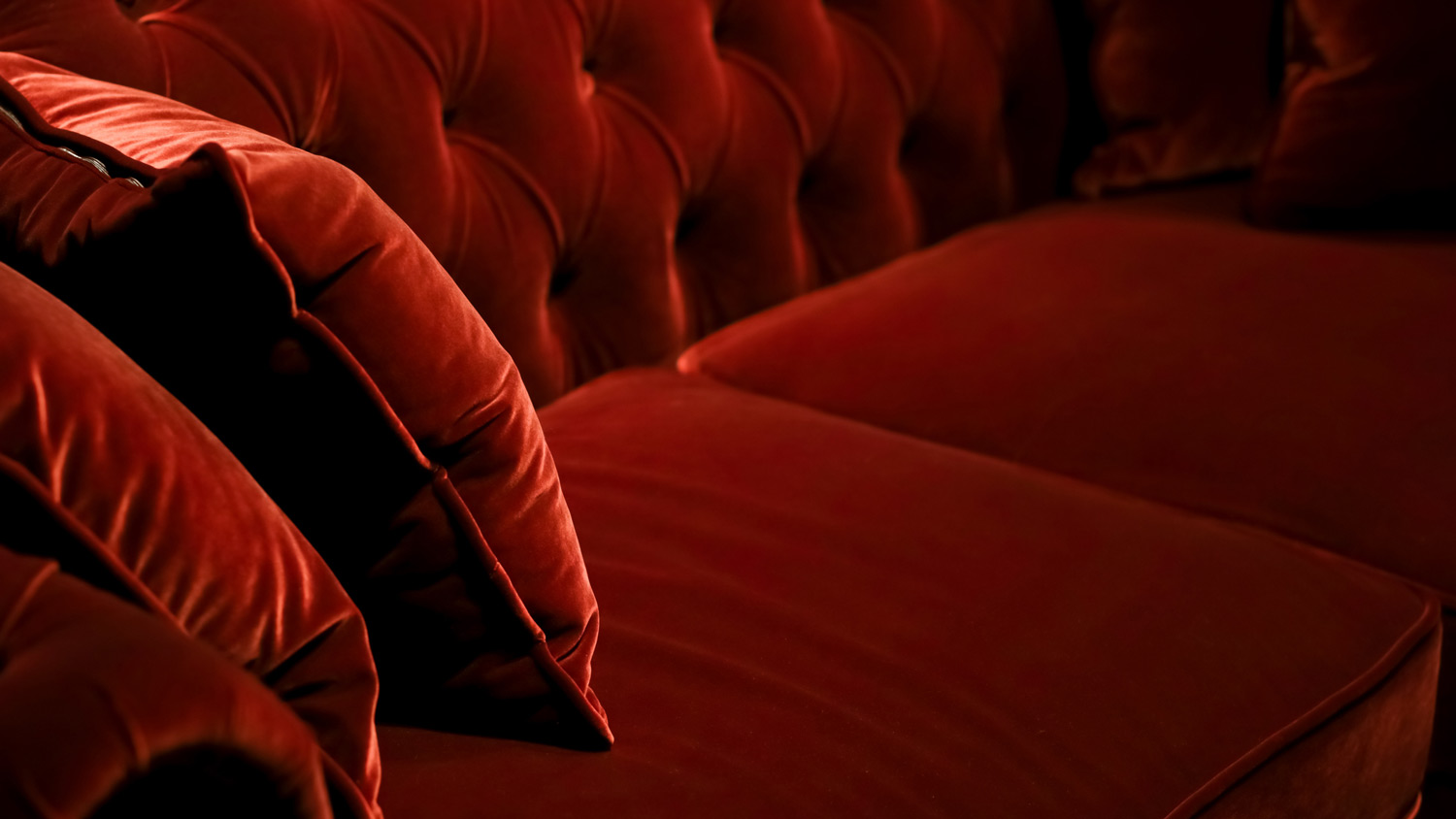
If you’re looking to bump the elegance of your space up a notch or two, you might consider velvet upholstery fabric. Velvet is soft, the colors are rich, and it always seems to look like a million bucks. Keep in mind, though, that velvet has a nap to it, and that can be a pro or a con.
With high-quality velvet (which can be expensive), that nap can catch the light beautifully and make your furniture and your space look amazing. If you have a low-quality velvet, the nap can flatten quickly, leaving you with furniture that looks a little worse for wear. Velvet can be quite durable, but it’s also difficult to clean. It’s great for adding a posh look to your space but not so great for busy homes.
11. Microfiber
If you like the look of velvet, but you’re not interested in the high price tag or the lack of durability, you might consider microfiber. Made from polyester, microfiber has a velvet-like texture, but it’s far more durable. You’ll also find that the colors in microfiber fabrics are just as rich as velvet. Not only is microfiber a bit more budget-friendly, but it beautifully resists stains and fading, so it’s great for lively homes.
12. Faux Leather
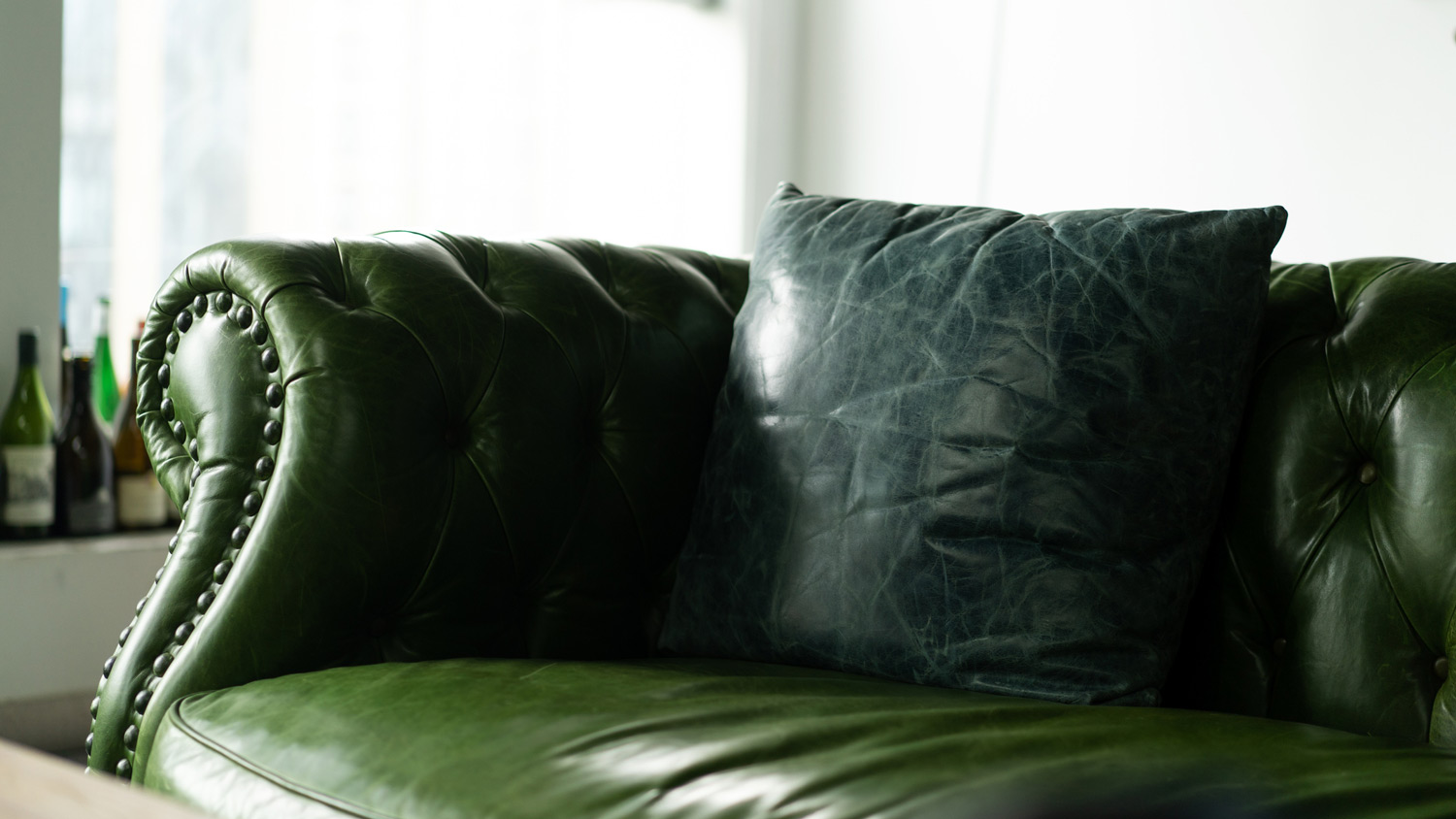
If genuine leather is not in the budget for your upholstery project, faux leather could be the next best thing. Not only is faux leather more affordable, but it’s also durable and easy to maintain. Moreover, advances in manufacturing have created faux leather fabrics that look and feel remarkably like genuine leather.
The only thing to keep in mind is that full leather does not wear the same way as genuine leather. It’s worth noting that while genuine leather ages beautifully and develops a gorgeous patina over time, faux leather often loses its luster and cracks with age. Faux leather might be best suited for office furniture or office chairs where longevity may not be such an issue.
13. Acetate
Created as an affordable option for silk, acetate is a popular choice for upholstery fabric. It's made from synthetic fiber and not only resembles silk in luster and sheen, but it also has the same hand as silk fabrics.
Acetate is great for furniture items, where you want to create the air of opulence with the corresponding price tag. That said, acetate is not suited for everyday use and is best reserved for statement pieces. Acetate is not durable, and it wrinkles and stains easily.
If your furniture is looking a little worse for wear, and an upholstery project isn’t your idea of a good time, you can always call in professional upholstery cleaners to restore them to their former glory.


